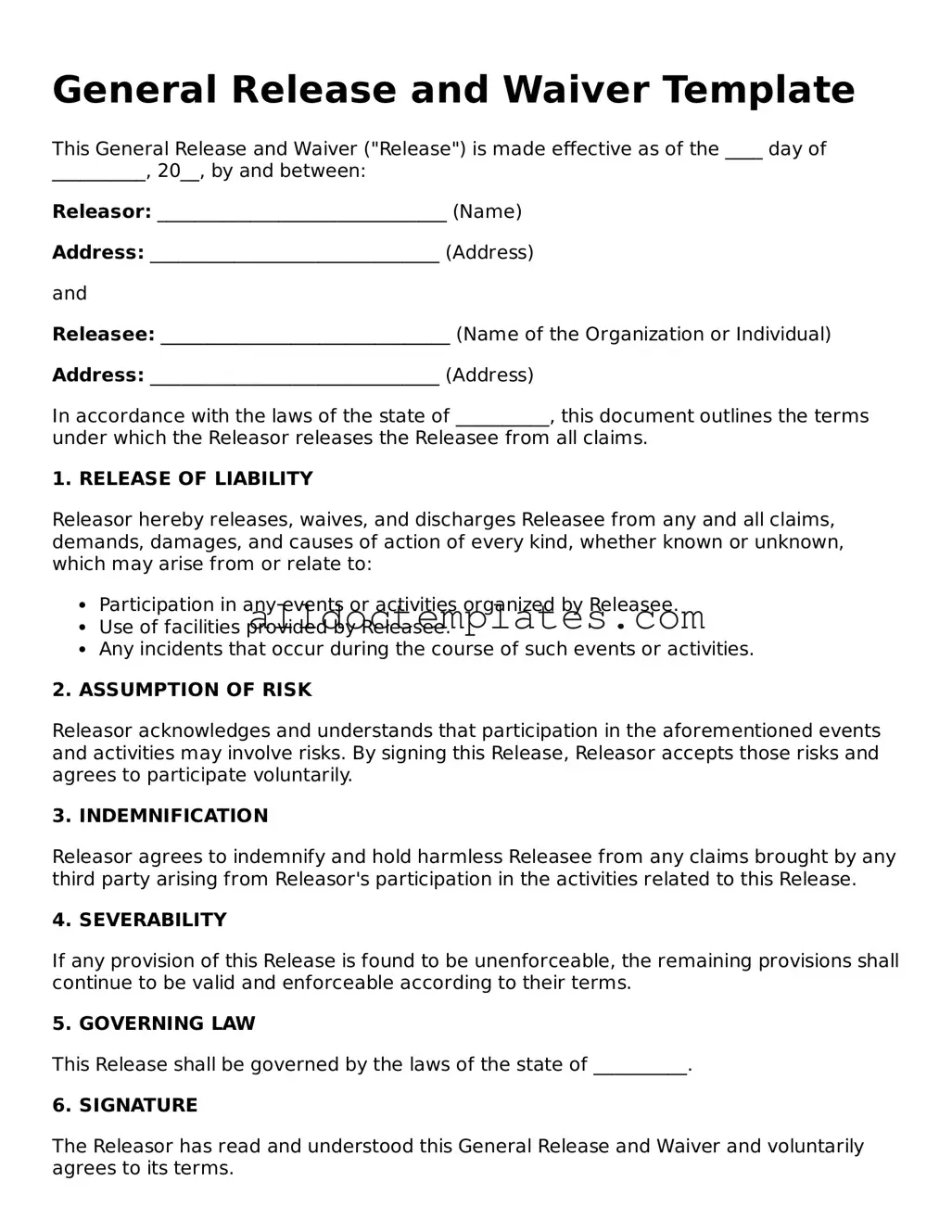General Release and Waiver Template
This General Release and Waiver ("Release") is made effective as of the ____ day of __________, 20__, by and between:
Releasor: _______________________________ (Name)
Address: _______________________________ (Address)
and
Releasee: _______________________________ (Name of the Organization or Individual)
Address: _______________________________ (Address)
In accordance with the laws of the state of __________, this document outlines the terms under which the Releasor releases the Releasee from all claims.
1. RELEASE OF LIABILITY
Releasor hereby releases, waives, and discharges Releasee from any and all claims, demands, damages, and causes of action of every kind, whether known or unknown, which may arise from or relate to:
- Participation in any events or activities organized by Releasee.
- Use of facilities provided by Releasee.
- Any incidents that occur during the course of such events or activities.
2. ASSUMPTION OF RISK
Releasor acknowledges and understands that participation in the aforementioned events and activities may involve risks. By signing this Release, Releasor accepts those risks and agrees to participate voluntarily.
3. INDEMNIFICATION
Releasor agrees to indemnify and hold harmless Releasee from any claims brought by any third party arising from Releasor's participation in the activities related to this Release.
4. SEVERABILITY
If any provision of this Release is found to be unenforceable, the remaining provisions shall continue to be valid and enforceable according to their terms.
5. GOVERNING LAW
This Release shall be governed by the laws of the state of __________.
6. SIGNATURE
The Releasor has read and understood this General Release and Waiver and voluntarily agrees to its terms.
Signature of Releasor: _______________________________
Date: _____________
